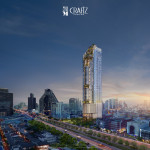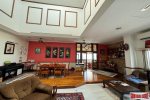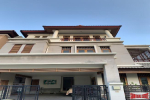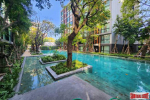2018/02/08 in Latest news - 31
Value in the Bangkok Resale Condo Market: Second time around
There has been continued demand for used high-end condominium units in older buildings in Bangkok, where prices have risen at a much slower pace than in new projects. While older condominium developments offer many advantages, there can be pitfalls too.
Both Thais and foreigners looking for an upmarket condominium, particularly for their own use, have a keen interest in more affordable units in old developments. Some of these condominiums may be offered at prices as low as half of those commanded by units in new buildings or under-construction projects.
Asides from lower prices, what buyers like most about older buildings is spaciousness. For example, while two-bedroom units in new condominium buildings are typically sized around 55-60sq m, two-bedroom units in many older buildings are 70 sq m. Old-generation condominium buildings also provide more spacious common areas, more parking spaces and full recreational facilities from large swimming pools, fitness/sauna rooms and children's playgrounds to tennis courts, which are not typically provided in many new developments.
For these reasons, it comes as no surprise that it is hard to find units being offered for sale by existing owners in many older upmarket condominium buildings, particularly those with professional management.
However, every coin has two sides. There are a number of less favourable aspects that purchasers of units in aged condominium developments may consider.
AGE COUNTS
Generally, newer condominium buildings attract tenants more easily. Therefore, purchasing used units in older buildings for rental income can be challenging unless the building occupies an exceptionally prime location, with easy access to a BTS or MRT station, where leasing demand is strong.
In addition, age issues can occur in terms of maintenance and repairs, particularly when the building is not well managed. Though it may be difficult for prospective buyers to tell if the property is managed professionally until they move in, the profile and track record of the property manager or management firm can be used as a primary assessment criterion.
Technologies continue to evolve, improving and enhancing the way buildings are designed, constructed and operated, and how they answer occupants' needs.
Units in most older buildings feature large balconies that may be considered an inefficient use of space today. Refurbishment may help improve efficiency but those who plan to purchase and refurbish these units must check out the house regulations with the condominium juristic person. Any refurbishment involving structural changes may be prohibited in some buildings.
On the safety side, the 1992 Building Safety Control Act requires buildings with more than eight floors to have sprinkler systems, heat detectors and other fire safety features such as fire escapes. Though most high-end condominium developments constructed before 1992 have these fire safety features, some are not equipped with sprinkler systems. The systems could be installed in buildings that are already constructed but the installation could be difficult because the systems must also be installed in each individual unit.
Other technological advancements that have occurred in the past decade and are now common features in most new, high-end condominium developments include high-speed lifts, more efficient waste management systems, better electricity distribution systems and modern pool designs. These all combine to produce a range of benefits from lower maintenance costs to savings in utility consumption costs.
While an upgrade plan can be carried out to keep the building up to these technological advancements, buyers who may be interested in purchasing aged condominiums should also be interested in the condominium accounts, particularly the current level of the sinking fund (saving accounts).
FOREIGN QUOTA
The availability of foreign ownership quota may change any time when a condo unit changes hands. The Condominium Act allows foreigners to own the maximum of 49% of the total floor area of all units in a condominium building combined. If a development comprises a total 100 units of the same size, foreigners can own up to 49 units.
Generally, foreign ownership accounts for approximately 30% in existing high-end condominium buildings, and thus a resale of a Thai-owned unit to a foreigner generally is not an issue. However, there are cases where Thai owners sold their units to foreign buyers without knowing the foreign ownership quota had been reached, and thus the ownership of unit could not be transferred at the Land Department. While this could happen in any condominium development, it could be seen more often in old prime condominiums that are exceptionally popular among foreign buyers.
To avoid complications, the seller and buyer can ask the property manager or the condominium juristic person about the current foreign freehold ratio. This is usually updated each year ahead of the annual general meeting and is the responsibility of the juristic manager to maintain.
It's apparent that older condominium developments in Bangkok have a number of unique advantages that continue to attract buyer interest. But they also come with some disadvantages. Some can be overlooked or rectified, and others must be given very careful consideration.
Source: https://property.bangkokpost.com/news/1407222/second-time-around





